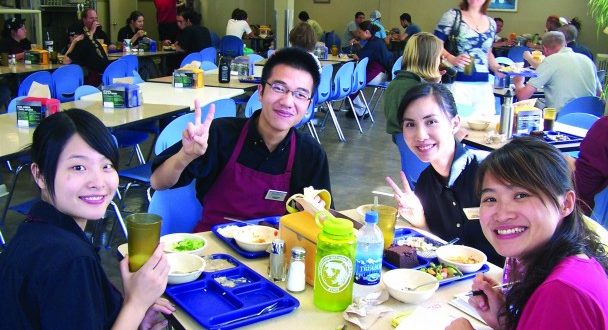With the summer season recently over, Yellowstone National Park’s largest concession company is already beginning the work of hiring employees for next summer.
And there’s a group of college students the summer service industry relies on more and more—international students from all over the world. The students work in national parks, amusement parks—anywhere summer seasonal help is needed.
American tourists are often perplexed to find a young woman from Taiwan selling T-shirts in a gift shop or having their food served by a young man from Ecuador. Who are all these foreign employees? Where do they come from, and why do so many employers, especially in national parks, hire them?
Most international workers are college students working and traveling in the U.S. under the U.S. Department of State’s J-1 visa program, explained Patty Ceglio, a web recruiting strategist with Coolworks, an online seasonal employment website based in Gardiner.
The J-1 program was created in 1961, according to the State Department’s website. Under the program’s rather strict rules, participants must be college students between semesters or very recent graduates. The students are allowed three months to work full-time and travel before they return to their home country, where they are meant to share their experiences of America.
Additionally, students are required to apply through their embassies and work with a sponsoring agency. Their visa dates are very specific, and they must have their paperwork in place before they can apply for a job. Once they are hired, they are required to remain with that employer, and then return home when their visa expires.
Carrie Holder, Xanterra Parks and Resorts in Yellowstone assistant director of human resources, said the company hired J-1 students as early as 1997. In the past, national parks were open from June to early September, which matched the schedules of American college students, the traditional summer employees, Holder said. Today, some seasonal jobs in Yellowstone start as early as mid-April and run until mid-October, and some jobs can last until early November.
American college students still hold a number of jobs from June to August, but with some jobs running from April to October, that’s a “hard sell,” Holder said. Most jobs are not “glamorous” or high-paying—housekeepers were paid $8.75 per hour last summer, Holder said, with deductions taken for room and board.
J-1 students are paid the same wages as American hourly workers, Holder said.
J-1 workers pay state and federal income tax but do not pay Social Security or Medicare tax, which saves employers having to pay the employer match to these programs, according to the website Jobofer.org, a sponsoring employment agency.
J-1 students fill jobs that can’t easily be filled by American workers, Ceglio said.
“We’re asking someone to move and live in a structured dorm situation. People with mortgages and homes and pets can’t just pick up and move across the country,” she said.
More American workers took the jobs during the 2007-2008 recession, but as the economy has improved, the number of J-1 students needed has started to climb again, she said.
And today’s American college students don’t have as much flexibility to take off for a low-paying summer job, Ceglio said. They’re often interested in career-driven internships or living rent-free with their parents to work and save money over the summer.
Students in Thailand, the Philippines and Singapore have college breaks in early spring and work into July, Holder said. And a number of students from Ecuador come on their break, from mid-July to the end of September, filling in the early and late-season gaps.
Sponsoring agencies hold overseas job fairs that American recruiters attend to hire J-1 students, Ceglio said. A single job fair might have recruiters from national parks, resorts and amusement parks, such as the popular Cedar Point, located in northern Ohio.
Xanterra will hire about 3,500 people over the course of a summer to fill its approximately 2,500 jobs, Holder said. J-1 workers will occupy about 25 percent of those positions.
“It’s like a big jigsaw puzzle,” she said.
Park employees today forge friendships with people from all over the world. American workers travel around the world to visit their international friends. There have even been cross-cultural romances and some marriages, Holder said. The international workers get American business experience and a chance to improve their English, and American workers get to experience people from other countries.
And with Yellowstone’s season now lasting into the late fall, the longer season brings a longer demand for in-park services.
“We are being asked to provide good guest service for a long period of time,” Holder said. “If you want to come enjoy the park in October, I have to have someone here to make your bed and cook your French fries.”
 Yellowstone Insider Your Complete Guide to America's First National Park
Yellowstone Insider Your Complete Guide to America's First National Park





